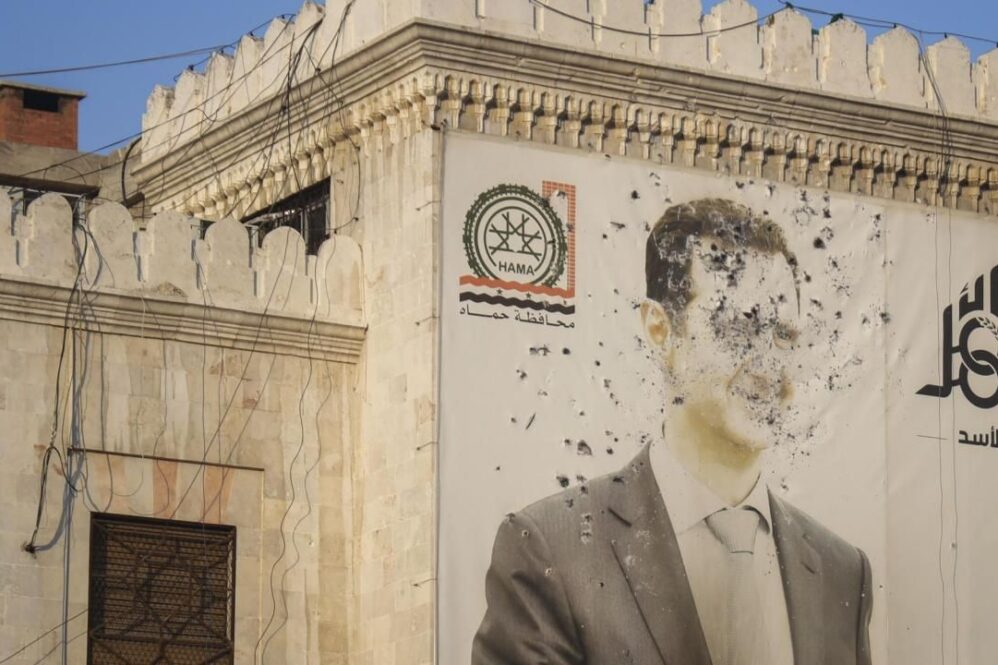The ongoing Syrian conflict has reached a pivotal moment. Recently, rebel forces launched a remarkable offensive from their stronghold in Idlib. This unexpected turn has shifted the balance of power, raising questions about the future of Bashar al-Assad’s regime and the potential for renewed conflict in the region.

The Rebel Offensive: A Game Changer in the Syrian Civil War
Recent developments in the Syrian civil war have highlighted the resilience and strategic capabilities of rebel forces. Using guerrilla tactics and coordinated assaults, these forces have successfully captured key territories previously held by Assad’s government. This shift from defensive to aggressive maneuvers indicates a significant reassessment of military capabilities on both sides.
Notably, the rebels are led by Hayat Tahrir al-Sham and allied factions. They have demonstrated an increasing ability to challenge the Syrian army. Their recent victories not only boost morale but also raise concerns for Assad’s regime. What was once improbable—the downfall of Bashar al-Assad—now appears to be a real possibility. This shift ignites discussions among international analysts and policymakers.

International Reactions: Navigating a Complex Geopolitical Landscape
As rebel forces gain ground, the international community watches closely. The evolving situation poses numerous questions regarding foreign involvement and support for different factions. Countries around the world face critical decisions on how to respond to this shift in power dynamics.
Some nations may see an opportunity to provide increased support to rebel forces. This could tip the scales further in their favor. However, some remain cautious, fearing that bolstering the opposition could lead to greater instability in an already volatile region. This delicate balance of power highlights the complexities of international diplomacy amid the ongoing civil war.

Humanitarian Concerns: The Toll of Escalating Violence
With the resurgence of fighting in Idlib, humanitarian concerns have intensified. The conflict has resulted in many displaced individuals seeking refuge from the violence. This influx places immense strain on local resources. Consequently, international organizations urgently call for increased assistance to address the dire needs of those affected by the ongoing turmoil.
The humanitarian crisis exacerbated by the conflict reminds us of the human cost of war. Access to basic necessities such as food, shelter, and medical care is increasingly challenging for displaced populations. As the fighting escalates, it is crucial for the global community to respond with compassion and support for those caught in the crossfire.
The Future of Assad’s Regime: Uncertain Times Ahead
The future of Bashar al-Assad’s regime now hangs in a precarious balance. The loss of significant territories to rebel forces could trigger a domino effect. This may embolden other factions to rise against the government. Such a shift in power dynamics could force Assad’s administration to reevaluate its military and diplomatic strategies. They may seek new alliances or negotiate terms for potential peace talks.
As the conflict enters a new phase, the implications of these developments extend beyond Syria’s borders. The geopolitical landscape in the Middle East is evolving, with various regional and global powers taking sides. Therefore, the potential for heightened tensions and conflicts in surrounding areas looms large. It is imperative for all parties involved to tread carefully.

A Call for Strategic Diplomacy: Pathways to Peace
Looking ahead, the situation in Syria underscores the critical need for strategic diplomacy. Collaborative efforts aimed at finding a peaceful resolution are essential. Such efforts can prevent further suffering and instability. Engaging neutral parties to mediate discussions could pave the way for a ceasefire and eventual negotiations, fostering an environment conducive to lasting peace.
As the international community grapples with the complexities of warfare and humanitarian concerns, a multifaceted approach is necessary. Building bridges between conflicting parties and promoting dialogue can help mitigate the impact of the conflict on civilians. This approach can contribute to a more stable future for Syria.
Conclusion: The Fight for Syria is Far from Over
As we navigate the unpredictable landscape of the Syrian conflict, one thing is certain: the fight for Syria is far from over. The recent resurgence of rebel forces has dramatically altered the dynamics of the war. This shift raises questions about the future of Assad’s regime, the involvement of foreign powers, and the humanitarian crisis unfolding on the ground.
As the situation continues to evolve, it is crucial for the global community to remain engaged and proactive. Seeking solutions that prioritize peace, stability, and the well-being of those affected by the conflict is essential. The path ahead may be fraught with challenges, but it is a path that must be pursued for the sake of a better future for Syria and its people.


















Everything that has a beginning must surely have an end. Assad’s time of reckoning has finally come.